Introduction to livestock feed companies in India: Agricultural producers raise cattle, poultry, horses, hogs, sheep, and other livestock. In addition, agricultural producers may raise livestock for sale. The term generally refers to domesticated animals. Farm accountants can value animals when they are available for sale and less estimated disposal costs from their selling prices. There are several conditions to meet to qualify for this option. It is possible to determine reliable and realizable market prices for the animals;
- Disposal costs are small and predictable
- Animals are available for immediate delivery
In the income, the livestock isis recorded as a change in revenue because it has a market value. Amounts of raised livestock are determined and valued based on the market prices at the end of the reporting period. In a revenue account, then, the difference between the ending and beginning value of f inventory is recorded. Feeding livestock generally calls for the use of a relatively small number of feedstuffs with few (if any) adjustments to diet formulation from day today. Knowledge about vitamin content has been empirically developed with the constant use of the same or similar diets in livestock production.
Top 19 livestock feed companies in India and livestock feed types
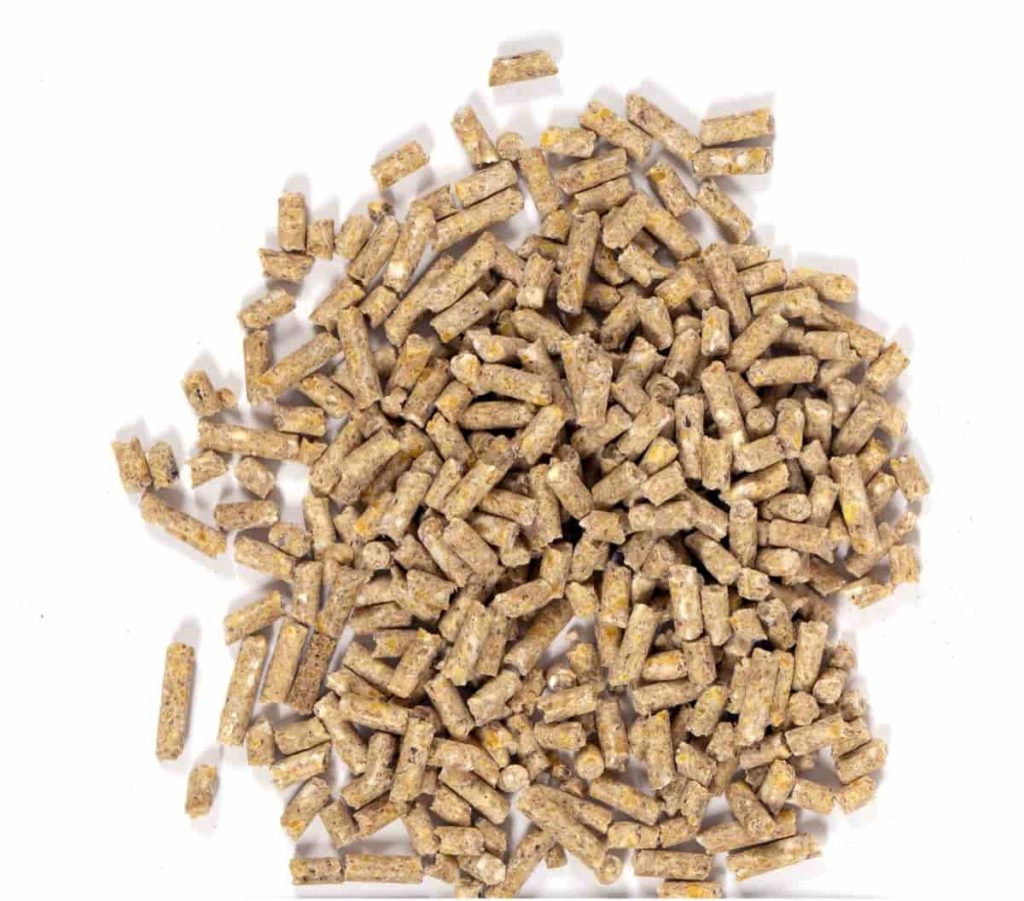
Types of livestock feeds
Concentrate foods
Cereal grains and their by-products
The primary purpose of barley, corn, oats, rye, and sorghum in North America and Northern Europe is to feed animals. However, small quantities are used to feed humans as well. Grains are fed whole or ground, either alone or combined with high-protein oils, minerals, and vitamins to form pig and poultry feed, as well as ruminants and horses, feed.
The production of grains is seasonal due to changes in temperature or moisture. Therefore, it is necessary to produce a full year’s supply during the short growing season. It is essential to dry grain to a moisture level of 14 percent or less and store it in containers or buildings protected from insects and rodents to prevent sprouting or mold. Since crop failures can occur, it is best to store more than a year’s supply of grains to be used as feed.
In case if you miss this: Pig Diseases, Symptoms, and Treatment
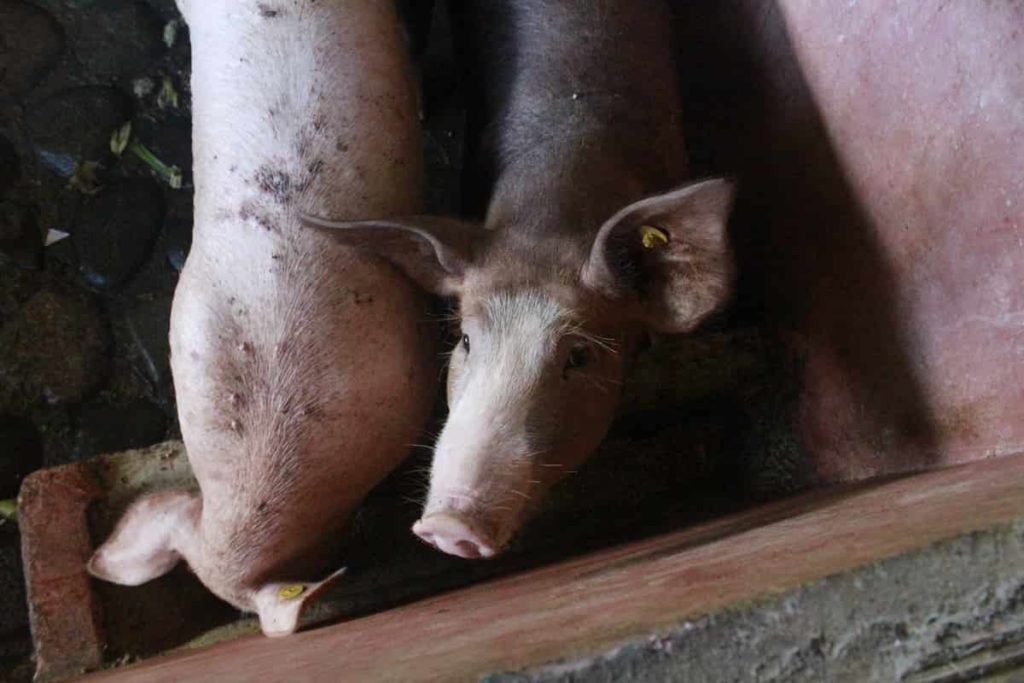
High-protein meals
Seeds are mainly produced as a source of oil for peanuts (groundnuts), human food, and industrial uses include soybeans, coconuts, canola, cottonseed, flaxseed (linseed), oil palm, and sunflower seeds. In removing the oil from these seeds, the residues, which contain between 5 and 1 percent fat and 20 to 50 percent protein, are sold as animal feeds. Cottonseed and peanuts have woody hulls or shells that are removed before processing.
The resultant by-product is higher fiber content and lowers protein and energy value if the hulls and shells are left intact. These meals for monogastric have varying levels and availability of amino acids, which affects the quality of the protein. In general, ruminants need only protein or nitrogen to synthesize amino acids. Therefore, high-protein feeds are supplemented with low-cost roughages, cereal grains, and other low-protein feeds to ensure efficient growth. Choosing a supplement for a particular diet is primarily determined by the cost and availability of supplies.
By-products of sugarcane and sugar beets
Beet tops come from the sugar beet industry, either fresh or ensiled on farms, while dried beet pulp and beet molasses come from sugar factories. The residue of cane sugar production is cane molasses. Each of these carbohydrates is excellent. However, bagasse (Stalk Remainder) from sugarcane is fibrous, hard to digest, and has low feed value. Therefore, animal feed is made from beets and other roots in India. The low-cost by-products of the citrus juice industry, citrus molasses, and dried citrus pulp are commonly used as high-quality feeds for cattle and sheep.
Other by-product feeds
A significant animal feed component is by-products or residues from commercially processed cereal grains for human consumption. Wheat bran, wheat middlings, wheat germ meal, and wheat mill feed comprise the largest group of these by-product feeds from wheat milling. In addition, pets and farm animals are fed with baked wastes, such as stale bread, rolls, and pastry products.
In mills that polish rice for human consumption, rice bran, and rice hulls are obtained similarly. By-products of starch manufacturing for food use include corn gluten feed, corn gluten meal, and hominy feed. As a result of fermentation industries that produce beer and distilled spirits, brewer’s grains, corn distillers’ grains, solubles, and brewer’s yeast are all appropriate animal feeds. Pineapple-canning plants generate waste products such as pineapple bran and pineapple pulp.
In animal slaughterhouses and meatpacking plants, by-products include meat and bonemeal, tankage (animal waste left over after fat is rendered), meat scraps, blood meal, poultry waste, and feather meal. There are different types and qualities of fish meals produced by fish-processing plants. By-products of animals are typically high in calcium, proteins, and phosphorus. Steamed bonemeal is exceptionally high in these minerals. Whey, Skim milk, and buttermilk are by-products of the dairy industry.
Roughages
Pasture
Grasses and legumes are the primary food source for ruminants, including cattle, sheep, horses, and goats. These animals provide most of their feed during the growing season at a much lower cost than feeds that need to be harvested, processed, and transported. Grasses, legumes, shrubs, and trees can all feed grazing animals. There has been extensive research on several cultivars, but the data is incomplete for many naturally occurring strains.
In case if you miss this: Goat Farming Insurance in India, Companies, Policies, and Premiums
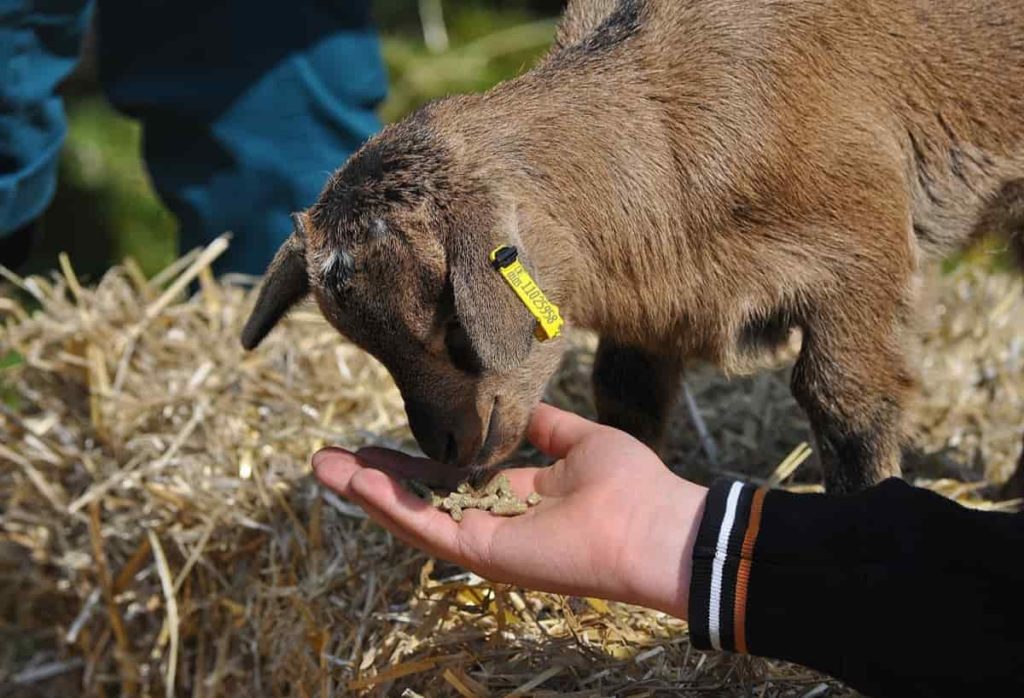
Hay
Hay is produced by drying grasses or legumes before the seeds are developed. In this stage, the amount of digestible protein and carbohydrates per unit of the land area is highest. Mold, heating, and spoilage are typically prevented by reducing the moisture content below 18 percent. As a result, the protein content of legume hays like alfalfa and clover is high. Grasses (such as timothy and Sudan grass) are lower in protein and vary considerably depending on their maturity level. They also differ in the amount of nitrogen fertilizer they receive. When fresh pasture grass has not been found, animals are fed stored hay.
Silage
Fermentation develops acetic and lactic acids that preserve the moisture in immature plants stored in an airtight container. Silos or trenches in the ground may be used for storage. The initial moisture concentration should be between 50 and 70 percent if the forage is hay. Low moisture levels can make obtaining sufficient packing to exclude air, resulting in mold or other spoilage.
Silage with a high moisture content tends to be excessively acidic and unpalatable because nutrients are lost by seepage. With ensiled forage, nutrients are stored for a more extended period with less loss than dry hay. Depending on the kind and level of curing, hay has varying nutritional value. Forages such as grasses, corn, sorghum, and leguminous forages are used to make hay.
Root crops
Because of economic reasons, root crops are used less frequently as animal feed than in the past. Instead, we feed them with beets (mangels), cassavas, turnips, rutabagas, and sometimes surplus potatoes. Comparatively to other feeds, root crops are low in dry matter and protein content; they are mainly energy sources.
In case if you miss this: Jersey Cow and Holstein Cow Differences, Features
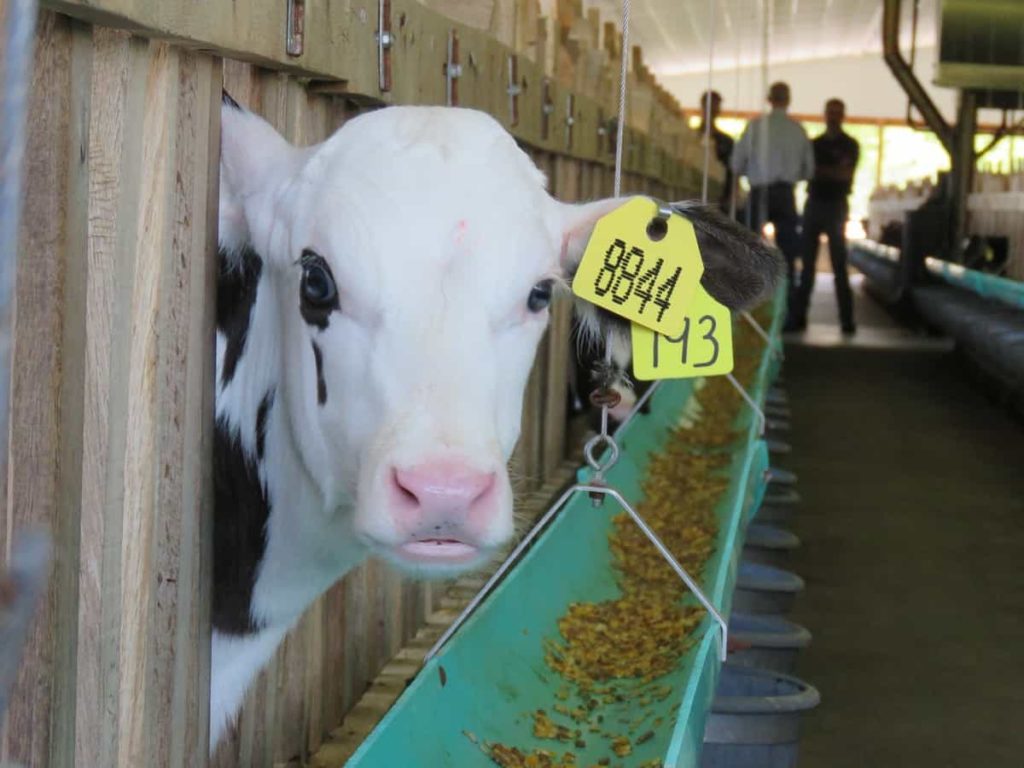
Straw and hulls
Straw is used for cattle and other ruminants after harvesting wheat, barley, oats, and rice. There is low protein and fiber content in straws; their digestibility is low. Straw is helpful when other feed is scarce. However, it helps to maintain mature animals. It still is not a satisfactory feed for extended periods unless it is supplemented with other feeds that provide protein, digestible energy, and minerals needed for growth and production.
When straw is treated with alkali, it becomes significantly more digestible, increasing its value to animals as a source of energy. Ruminant diets can also contain corncobs, cornstalks, cottonseed hulls, and rice hulls as fiber sources. On the other hand, Rice hulls have a lower value than the others.
Best livestock feed companies in India
Prakash foods & feed mills private limited
It is an Indian company with 25 years of experience in Chennai (South India). This company has been the second-largest meat and bone meal producer in India for two decades. The Bio-A-Pro (Meat Meal) product the company is offering you is a highly sterilized product that has been exported to Gulf countries for fifteen years.
Conceptual equipment and services Pvt. Ltd
This company Represents TS Dies Rolls (part of Sprout Andritz) in India and UAE. TSR manufactures pellet mills, and Hammer mills are also available. Additional products include a poultry feed plant, a fish feed plant, and a cattle feed plant. Die supply and pellet-making services are also available.
Sobti industries
A global supplier of agricultural products and food ingredients, N.B. International is one of the world’s leading supply chain managers and processors. one of the companies in the N.B. group has a pan-India presence with offices in Mumbai, Ahmedabad, and Bangalore.
N.B.International
A global supplier of agricultural products and food ingredients, N.B. International is one of the world’s leading supply chain managers and processors. one of the companies in the N.B. group has a pan-India presence with offices in Mumbai, Ahmedabad, and Bangalore.
Sirmadan gopal bhikam chand marketing private ltd
Sri Madan Gopal Bhikam Chand Marketing Pvt. Since 1942, Limited Jaipur has been one of the largest exporters of agricultural products. The company engages in manufacturing, exporting, trading, and distributing spices, food products, such as beef.
Among the most active companies in India is Vinayak Ingredients, a well-known manufacturer and exporter of animal feed supplements. Toxin Binders, Pellet Binders, and Herbal Methionine are our top poultry industry products. In addition, the company also offers calcium suspensions, milk enhancers, and mineral supplements.
Bluecross animal healthcare PVT. Ltd
Bluecross Animal Healthcare (P) Ltd. It manufactures organic animal health care products and veterinary products for the livestock and poultry sectors. Formulations have achieved international acclaim due to their robust concepts.
S.G. mechanical works
Poultry, Chicken Fish, Cattle or Cow Feed Plants, Aqua Wood, Pellets, Horse Camel Duck, Pet Animal Agro Waste Plants machinery for range 1 MT/H to 80 are some of the products that S. G. Mechanical Works manufactures and exports. Solid and high-quality machines have significantly improved.
In case if you miss this: Farming In Mexico, Crops, Livestock, FAQs
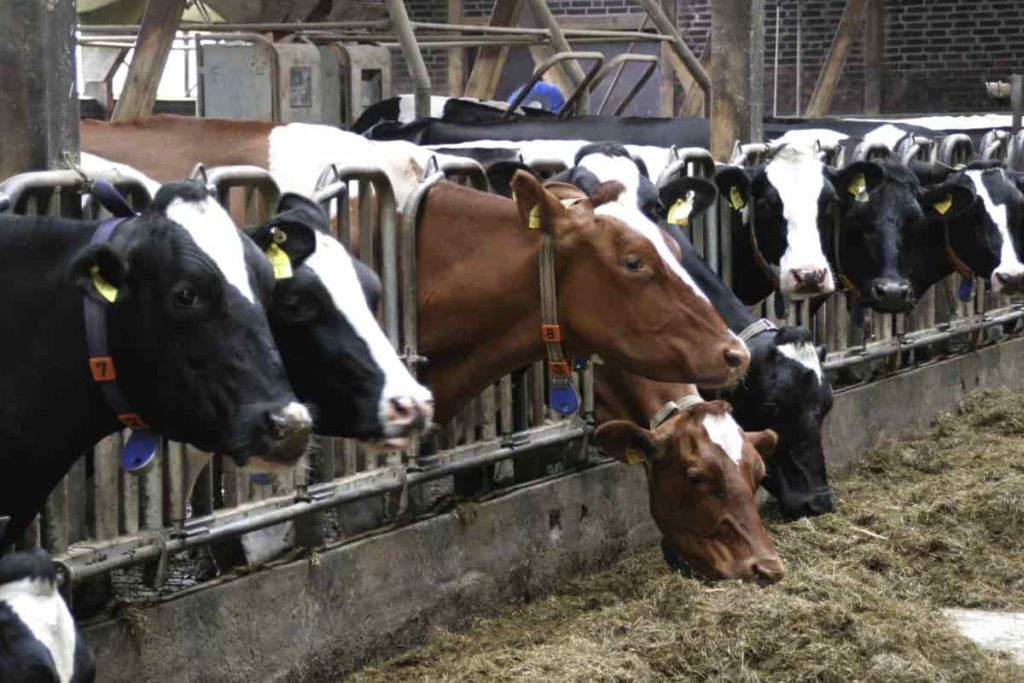
Zytex biotech private limited
One of India’s pioneers in industrial biotechnology is Zytex. Silvassa, India, is the company’s first manufacturing facility. A company specializing in enzymes and biotechnology products has more than five decades of experience. It opened an export-oriented facility in Surat in 2004.
Hindustan animal feeds
This company provides the widest variety of high-quality animal feed products. Here at Hindustan Animal Feeds, The company offers a wide selection of feeds & supplements to meet the specific requirements of this company’s customers. As one of the leading manufacturers and exporters of compound feeds, this company has been in business since 1999.
V-connect overseas
V-connect overseas believes in conducting an honest and transparent business. As a result, the company strives to provide the best possible service to our clients. The timely delivery of company products is one of our highest priorities. The company’s timely, efficient service has helped us become a valued business partner. This company provides high-quality service.
Asia & Africa trading Sdn Bhd
It exports and processes agro-food products. In addition, agro-food products such as yellow corn and soybean meal are exported in bulk.
AUM International
Aum International’s role as an exporter continually raises the bar. It expands the boundaries of what is possible to offer our clients products services that are as distinct and unique as they are of the highest quality. As a result, human beings’ most basic needs are met by the products we offer, from food to animal feed.
Matrix life science
Tocopherols (Vitamin E) are naturally derived from Non-GMO Soy, Sunflower, and Rapeseed. As one of the few companies that provide the full range of Vitamin E & its derivatives under one roof, we have one of the largest installed capacities. In addition, as a state-of-the-art manufacturing facility, we offer wholesome nutrition, vitality, and a healthy lifestyle by complying with international standards.
Jain international export private limited
Pulses, Spices, Wheat Flour, Grains, Organic Fruits, Organic Vegetables, Rice, Sugar, Organic Honey, Organic Ghee, Organic Spices, Dry Fruits, Frozen Food, Organic Tea, Namkeen, Indian Traditional Snacks, Mineral Water, Commodities, Bio Organic Fertilizer, Animal Feed, and Industrial Material. Directly purchased from manufacturers, we export the best quality at an economical price: Canadian, New Zealand, German, Singaporean, Portuguese, U.K., and Czech exports. We are ISO certified.
Wings Impex
This company iexports agri commodities. It also produces Rice, Pulses & Beans, Spices, Flour, Lentils, Sugar, Animal Feeds, Grains, Jaggery, Oil Seeds, Honey & Animal Feed. Rice: Non-Basmati RiceBasmati Rice, Flour: Multigrain flour, Whole Wheat flour, Cornflour, Rice flour, Beans (chickpeas) flour, Maida flour, Rava flour. Pulses & Beans: Chickpeas, Mung beans,
DHN international
Besides the company’s significant experience in the textile and chemical industries, this company is a team of young entrepreneurs with a wide range of business skills. In very little time, DHN International has become the largest manufacturer, supplier, and exporter of Animal feed products based on Sorghum, Maize, and Guar Gum derivatives for various Animal feed products. Additionally, the company provides textile chemicals, such as Textile auxiliaries and Printing thickeners, which can be used for dyestuffs of all kinds, including polyester, nylon, silk, cotton, etc.
Enzyme bioscience private limited
In addition to pharmaceutical enzymes (papain enzymes, ox bile extract, pancreatic enzymes, trypsin chymotrypsin enzymes), meat tenderizer powder, papain powder, animal feed enzymes, and cellulase enzymes, the company manufactures industrial enzymes, textile enzymes, and cellulase enzymes.
Kamlesh agro-food
The company offers a wide range of quality products, including nutritious wheat, basmati, and non-basmati rice, nutritious pulses, Indian spices, wheat products, cattle feed, copper products, seeds, readymade garments, powders, cotton products, designer sarees, handicraft products, oilseeds, and incense cones.
Pramukh Exim private limited
This company is a leading manufacturer and exporter of sea salt, edible salt, industrial salt, bentonite, and minerals. The company exportsKandla, Mundra, and Pipavav Ports products, accessible from major ports worldwide. As well as container loads, it also ships breakbulk and bulk cargo. This company mainly deals in Sea Salt, Bentonite All Grades, Cotton Seed Cake Meal Used for Animal Feed, Handicrafts, Agri Products, etc.
Commonly asked questions about livestock feed
1. What type of feed is preferred for livestock?
It is usually grass that composes most of the diet of pastured animals. However, the energy density of feedlot cattle is increased by supplementing hay with grain, soy, and other ingredients.
2. How much crude protein does livestock feed contain?
Animal feed or specific foods are considered to contain crude protein. It depends on the nitrogen content of the proteins in the food. Animal husbandry and nutrition use crude protein measurements. It is an economic measurement.
3. Which is the best feed for livestock?
- Cattle can overgrow and become fat on grain supplements
- Hay provides every critical nutrient for cattle, but it must be picked at its peak of nutrient concentration, that is, before it becomes too dry
- Pasture and Forage
- Concentrates
4. How is livestock feed made?
According to the study, grass and leaves provide 46% of global livestock feed. However, when examining grazing and mixed systems, the study found 90% of ruminants’ diet roughage, such as leaves, grass, hay, and crop residues.
- Types of Pesticides Used in Agriculture: A Beginner’s Guide
- Economical Aquaculture: A Guide to Low-Budget Fish Farming
- 15 Common Planting Errors That Can Doom Your Fruit Trees
- How to Make Houseplants Bushy: Effective Tips and Ideas
- Innovative Strategies for Boosting Coconut Pollination and Yield
- Pollination Strategies for Maximum Pumpkin Yield
- The Complete Guide to Chicken Fattening: Strategies for Maximum Growth
- Natural Solutions for Tulip Problems: 100% Effective Remedies for Leaf and Bulb-Related Issues
- Revolutionizing Citrus Preservation: Towards a Healthier, Greener Future
- Natural Solutions for Peony Leaf and Flower Problems: 100% Effective Remedies
- Maximizing Profits with Avocado Contract Farming in India: A Comprehensive Guide
- Natural Solutions for Hydrangea Problems: 100% Effective Remedies for Leaf and Flowers
- The Ultimate Guide to Choosing the Perfect Foliage Friend: Bringing Life Indoors
- From Sunlight to Sustainability: 15 Ways to Use Solar Technology in Agriculture
- The Ultimate Guide to Dong Tao Chicken: Exploring from History to Raising
- The Eco-Friendly Makeover: How to Convert Your Unused Swimming Pool into a Fish Pond
- Mastering the Art of Delaware Chicken Farming: Essentials for Healthy Backyard Flocks
- 20 Best Homemade Fertilizers for Money Plant: DIY Recipes and Application Methods
- How to Craft a Comprehensive Free-Range Chicken Farming Business Plan
- Brighten Your Flock: Raising Easter Egger Chickens for Beauty and Bounty
- How to Optimize Your Poultry Egg Farm Business Plan with These Strategies
- Subsidy for Spirulina Cultivation: How Indian Government Schemes Encouraging Spirulina Farmers
- Ultimate Guide to Raising Dominique Chickens: Breeding, Feeding, Egg-Production, and Care
- Mastering the Art of Raising Jersey Giant Chickens: Care, Feeding, and More
- Ultimate Guide to Raising Legbar Chickens: Breeding, Farming Practices, Diet, Egg-Production
- How to Raise Welsummer Chickens: A Comprehensive Guide for Beginners
- How to Protect Indoor Plants in Winter: A Comprehensive Guide
- Ultimate Guide to Grow Bag Gardening: Tips, Tricks, and Planting Ideas for Urban Gardeners
- Guide to Lotus Cultivation: How to Propagate, Plant, Grow, Care, Cost, and Profit
- Agriculture Drone Subsidy Scheme: Government Kisan Subsidy, License, and How to Apply Online
- Ultimate Guide to Raising Araucana Chickens: Breed Profile, Farming Economics, Diet, and Care
- Bringing Hydroponics to Classroom: Importance, Benefits of Learning for School Students
- Ultimate Guide to Raising Polish Chickens: Breed Profile, Farming Economics, Diet, and Care
- Ultimate Guide to Raising Australorp Chickens: Profile, Farming Economics, Egg Production, Diet, and Care
- Silkie Chicken Farming: Raising Practices, Varieties, Egg Production, Diet, and Care
- Sussex Chicken Farming: Raising Practices, Varieties, Egg Production, Diet and Care